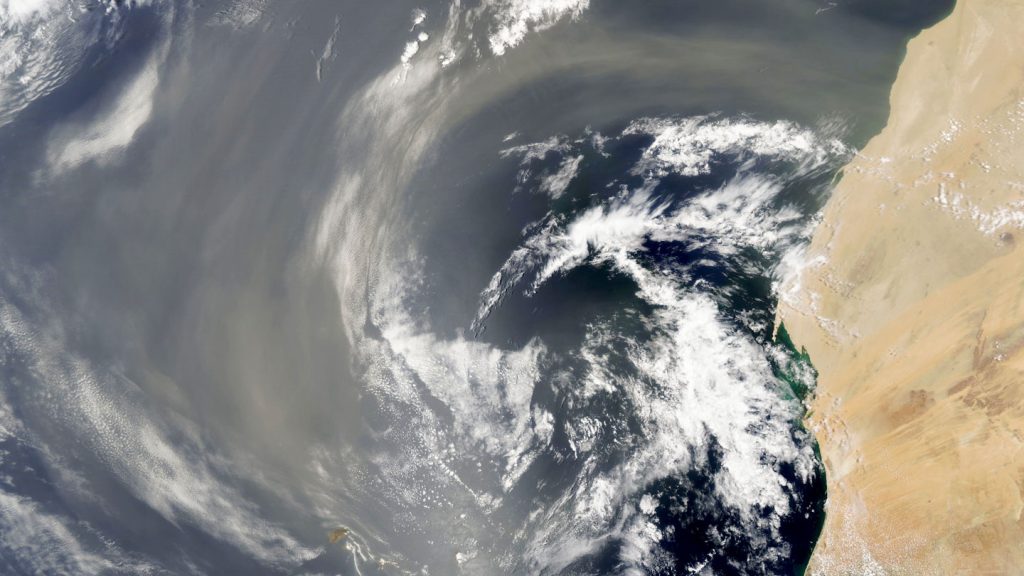Saharan dust blown across the Atlantic Ocean becomes more nutritious for marine microbes due to chemical reactions in the atmosphere that make iron minerals more water soluble. Iron is essential for life, particularly for phytoplankton, which use it to convert carbon dioxide into sugars during photosynthesis. Over 240 million metric tons of Saharan dust blows into the Atlantic each year, providing a critical source of iron to parts of the ocean that are too far from land to receive it from rivers. By studying dust transport and chemical reactions in the atmosphere, scientists hope to better understand why certain parts of the oceans are rich in phytoplankton and fish.
Researchers have found that the composition of dust settling in the Atlantic Ocean has changed over the past 120,000 years. Dust-derived minerals in core samples from the seafloor indicated that reactive iron minerals within the dust had been altered during the transatlantic flight. Reactive iron is essential for life, and the transformation of iron in dust particles makes it more soluble in water, allowing it to be utilized by phytoplankton once it settles in the ocean. This process can lead to phytoplankton blooms, which in turn nourish small fish and other marine organisms, creating a thriving ecosystem.
Despite challenges in pinpointing the exact source of dust in the deep seafloor, researchers have used measurements of iron to aluminum ratios and light iron atoms to heavy iron atoms to identify the origin of the dust. The ratios found in the samples were consistent with the type of dust that comes from the Sahara, suggesting that the iron found in the deep Atlantic Ocean is likely from Saharan dust. Further analysis of sediment samples from various sites across the Atlantic could provide a more detailed understanding of how dust has traveled across the ocean and changed chemically.
The study highlights the importance of desert dust as a source of iron for marine ecosystems in the Atlantic Ocean. By unveiling the fate of Saharan dust as it travels across the ocean and chemically transforms, scientists can gain valuable insights into the processes that support life in iron-starved areas of the sea. The findings suggest that the farther desert dust flies, the less reactive iron is left, as it is altered by acids and ultraviolet radiation during its journey. This modified iron becomes more soluble in water, providing a vital nutrient source for phytoplankton and contributing to the health of marine ecosystems.
The implications of this research extend to commercial fish species like Atlantic skipjack tuna, which are attracted to areas where Saharan dust has settled due to the flourishing phytoplankton blooms that it supports. Understanding the role of dust-derived iron in nourishing marine life is crucial for maintaining healthy ecosystems and supporting biodiversity in the ocean. By studying the chemical transformations of dust and its impact on ocean ecosystems, scientists can shed light on the intricate interactions that drive life in the marine environment.


